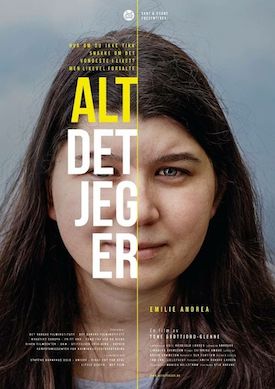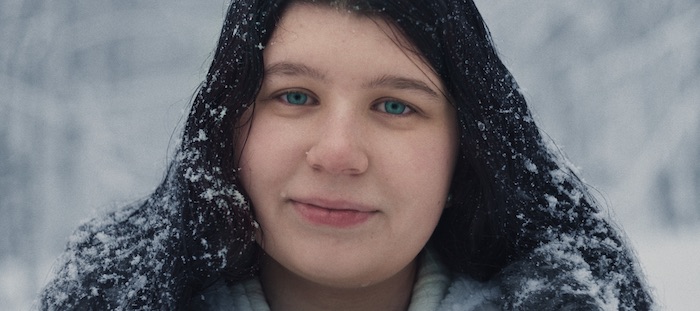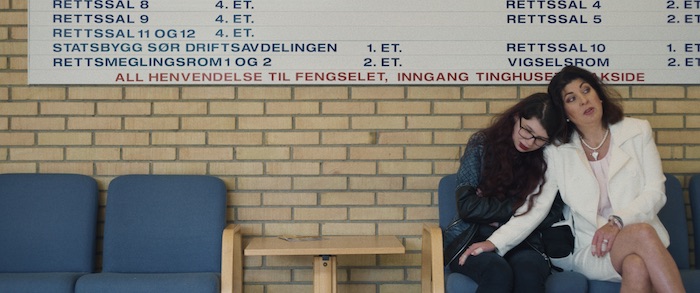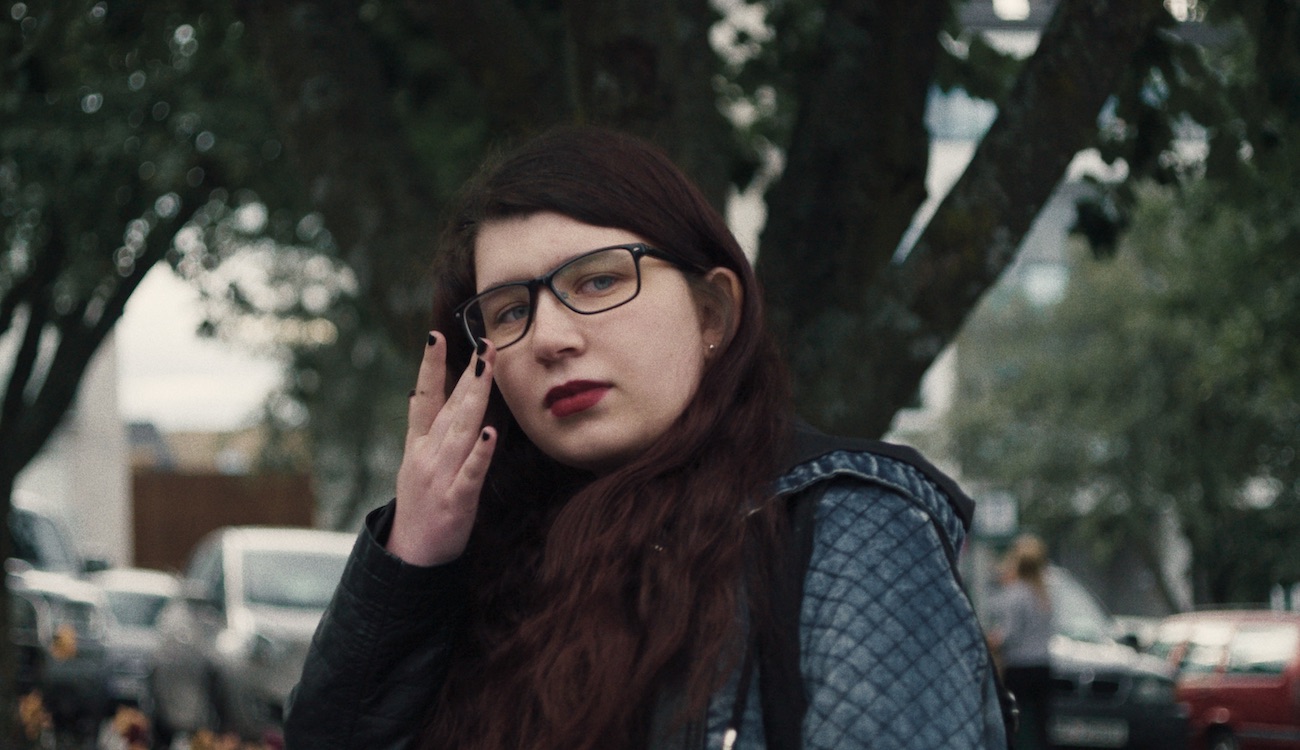 After five years in the foster system, 18-year old Emilie returns to her family home to rebuild a fractured relationship with her mother and her younger half-siblings. Over the next two years, a determined Emilie begins to heal the trauma that haunts her, learns to speak her truth aloud, and takes her first steps towards a self-determined future. Now Emilie must gather the courage to reveal to her half-siblings the reason their father was imprisoned and their sister went away. Told with a commitment to emotional insight and dedication to Emilie’s subjective experience, All That I Am is the story of an extraordinarily courageous young woman on the cusp of adulthood finding the voice that was long denied to her.
After five years in the foster system, 18-year old Emilie returns to her family home to rebuild a fractured relationship with her mother and her younger half-siblings. Over the next two years, a determined Emilie begins to heal the trauma that haunts her, learns to speak her truth aloud, and takes her first steps towards a self-determined future. Now Emilie must gather the courage to reveal to her half-siblings the reason their father was imprisoned and their sister went away. Told with a commitment to emotional insight and dedication to Emilie’s subjective experience, All That I Am is the story of an extraordinarily courageous young woman on the cusp of adulthood finding the voice that was long denied to her.
This moving Norwegian documentary is essential viewing for anyone with an interest in helping victims of child sexual abuse. I was happy to talk to the film’s talented director, Tone Grøttjord-Glenne, from her home in Norway about this important film. The filmmaker is currently overseeing a digital platform that will allow people to use the film to learn more about this horrible worldwide problem and to help those who work with its victims. The film is currently a part of the online Hot Docs Online Festival.
Danny Miller: I’m especially grateful for this coming out right now during this time when people are quarantining with their families. I worry so much about kids in abusive situations who are stuck at home.

Director Tone Grøttjord-Glenne
(Photo by Stine Østby)
Tone Grøttjord-Glenne: Yes, it’s a very serious problem for all the children who are trapped in their house with their abusers. Of course, that’s true even when there’s not a pandemic.
Right. I was very impressed by Emilie. It was so brave of her to put herself out there in that way. How did you decide to feature her as the main subject of this film?
I was doing research with police departments in Norway and the people there who do the interviews with children who have been sexually abused. I spent half a year with them reviewing cases. One day they told me about this girl they talked to several years earlier that they could never forget. It was Emilie and she had just turned 18 so I went to meet with her. I already knew her story — that she had been sexually abused from the age of six to twelve, and that she had finally told a teacher about it and had been moved into foster homes. When I met her, she had only recently been reconnected with her mom and half-siblings.
I assume the person featured in the film had to be over 18.
Definitely. It had to be someone who could really grasp and deal with what it would mean to have her story presented to the public in this way — and we wanted to follow Emilie’s story into the present. When I met her for the first time, I invited her mother to come along. I knew their relationship was still quite fragile at that point and they were just getting to know each other again and I didn’t want Emilie to be in the film without the support of her mom. I saw that there was a really strong mother-daughter story there. And I was constantly impressed by how expressive Emilie was — it was like her emotions were outside of her body, and I thought it was important to follow someone where you could see the effects of the sexual abuse in her daily life without making her talk about it all the time.

I was moved by her mother’s courage in putting herself out there in the film. I can only imagine the guilt she felt about the whole situation. Was she worried about how people might respond to her role in Emilie’s story?
Oh yes, she was quite worried about that. We decided to really take our time with the film as Emilie adjusted to life back at home. We started shooting in January 2016 but we didn’t launch the film until March of this year. That last scene in the film, when Emilie is about to tell her half-siblings what happened, was actually shot in late 2017. We then waited a whole year while the family went to the therapy to try to mend itself. And then the psychologist we were working with had us wait another full year until the family was ready, before we even started editing. We wanted Emilie to be a bit older when the film came out.
Wow, so it sounds like at any point in that process things could have happened that would have caused you to make the decision to not release the film at all.
Yes. We didn’t want to put any extra pressure on the family while they were dealing with so much. But ultimately we all decided that releasing this film could be a great help to the people and organizations who work with this issue every day. We’ve already seen how they’re using it as a tool in their trainings.
The officials working with Emilie that we see in the film seem very skilled and compassionate.
We really didn’t know how deep she’d be going into the system. After we began, she got a call from the welfare administration that felt Emilie was now ready to go back to work and they wanted to talk to her about that since she had been receiving a monthly stipend from the government. Emilie called and asked if we wanted to go with her to film that meeting so we worked it out.
I think that’s a very important scene to have in the film.
When we screened the film for welfare administration offices around Norway, that scene really started a lot of conversations. They saw how they were pressuring Emilie to move faster than perhaps what was best for her so it became a teaching moment. In that first meeting, she wasn’t really ready for a job and she kept trying to tell them that. When they saw the film, they started talking about how they had to listen to their clients more and really make them a part of the process.
It’s tricky, though, because I can also see how they were just trying to motivate her and get her over the hump of her fears about being in the world. I think the whole film could be used well to help train the people who work with this community.
Yes, that is my hope, too, and I’m happy to say that many of these groups came to see the film when it opened in Norway in March. I wrote an article about those screenings that was distributed to all 500 of the child welfare offices across Norway. And now the digital platform we’ve created is being used by many such groups. The platform uses scenes from the film mixed with interviews with experts, texts, reflection questions, and all that. The site will be fully up and running within the next few months. And I’m working with some universities in the U.S. as well.
When you’re making a documentary, you never know exactly how the story is going to go. Were there any big surprises for you during the shoot?
When we began, I had no idea that Emilie would go to civil court against her abuser. That ended up being a great way to give some important background information to Emilie’s story without making her talk a lot about it in the present. It also showed how what happened was causing her to struggle in her everyday life. The scene in which she’s talking to her lawyer at court and then has to see her abuser standing there smoking a cigarette was very intense. We can really feel how scared she is. That scene ended up having so many functions and layers.

This film is different from others that I’ve seen on this topic in that it really shows how child sexual abuse affects the entire family. While I totally empathized with the mother and why she didn’t want her younger children to know what had happened with their dad who had suddenly disappeared from their lives, it’s clear that they really needed to be told the truth, as painful as it was. Seeing the process leading up to that meeting is so helpful.
It’s interesting because Emilie is a very non-confrontational person. I knew she really, really wanted to talk to her mom about some of things that happened and part of me was just waiting for a scene in which she would explode and start yelling about how sad she was that her mother had not been able to meet her in the way that she needed, but that never happened despite how much I was always writing that scene in my head. Emilie is very low key and all of the serious conversations she had with her mom happened in much more subtle ways, not like they would in a fiction film. I remember one day when the mom was telling her how worried she was about the younger siblings knowing the full story because she was afraid they would tell their friends and then there’d be a lot of shame for the family. And then Emilie said, “Well, you know, when you’re not allowed to speak about anything at home, it’s not so strange that you have to speak about it elsewhere.” I think that really had an impact on her mother.
I think it’s precisely because Emilie is not someone who is prone to high emotion and histrionics that every emotion we see her having is that much more effective. I was on the edge of my seat during the tense build-up to that final conversation with her siblings. Do her brother and sister have any relationship with their father now?
They don’t, but at least now if they choose to have a relationship with him later, they can go into that relationship knowing the truth. They were very young when this happened and it was hard for everyone to open that box up again after so many years but it was really important to tell the truth so that they could all move on. Emilie and her mother both knew that the conversation had to take place, no matter how hard it was.
Again, I admire the mother for having the courage to let that happen.
I think she’s a very important character in the film because she represents so many mothers who are in that position. A lot of kids are being sexually abused, and a lot of them have mothers with a similar story. I’m hoping the film will help mothers and daughters have these difficult conversations. In the end, Emilie and her mom are able to have honest discussions about it and I hope that will give courage to other mothers and daughters out there. This is not easy stuff to deal with.
I’m glad that you got to have some screenings in theaters just before the pandemic hit. What were those like?
What surprised me is how many different sectors of people who work with children responded to the film. We had screenings for welfare agencies, police forces, and people who work in the court system. And, as I’ve said, we’re creating a lot of academic material that uses the film for training purposes, including teachers who are often the first people to hear about such abuse. I like that all these sectors can use the film to have a common reference through Emilie’s story, to talk about the best methods to use to help these children.
How is Emilie doing today?
She’s doing well! I think putting an end to all those family secrets changed her so much. She’s a lot more relaxed now and I can see that the film coming out has been very empowering to her.

